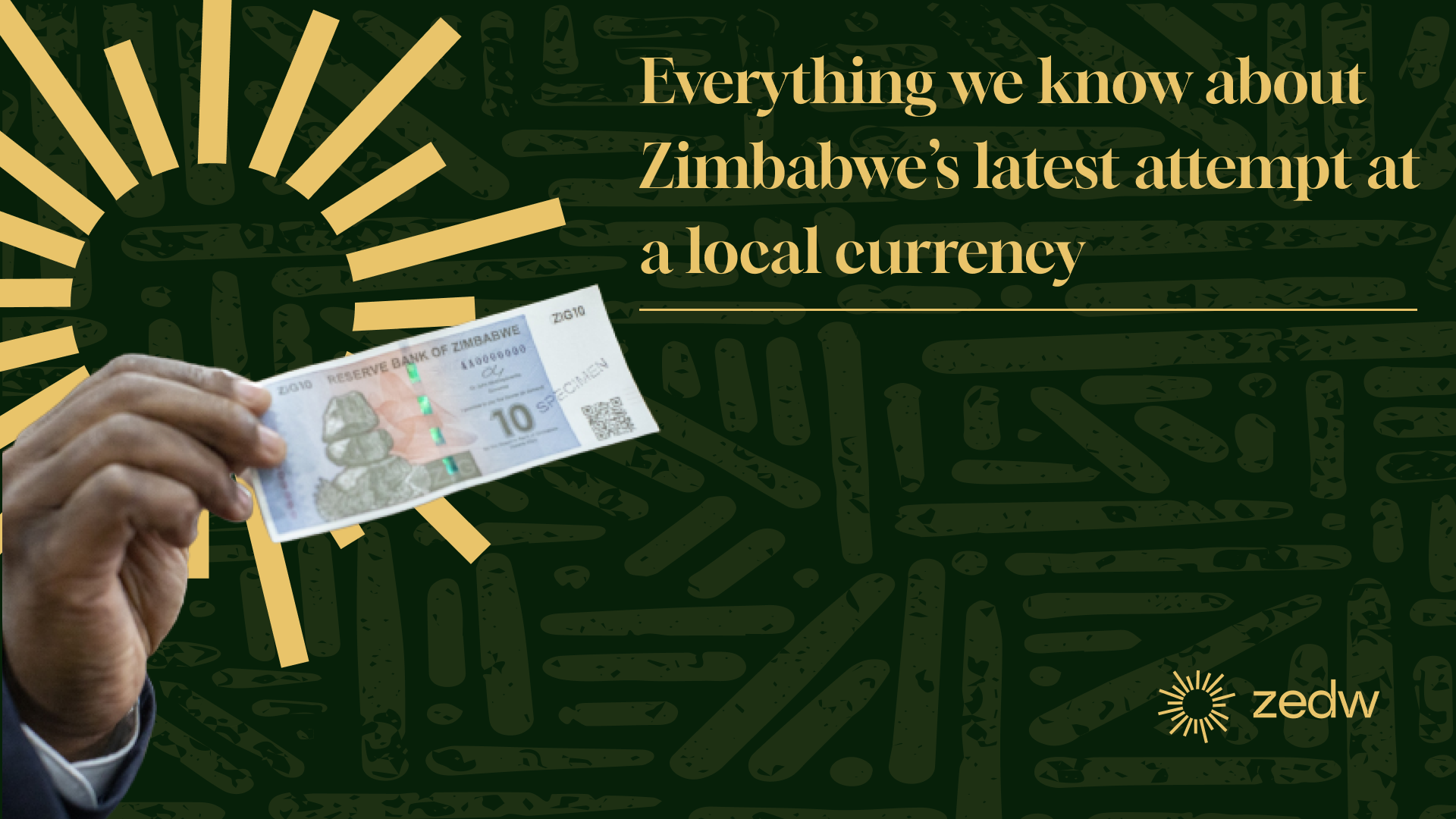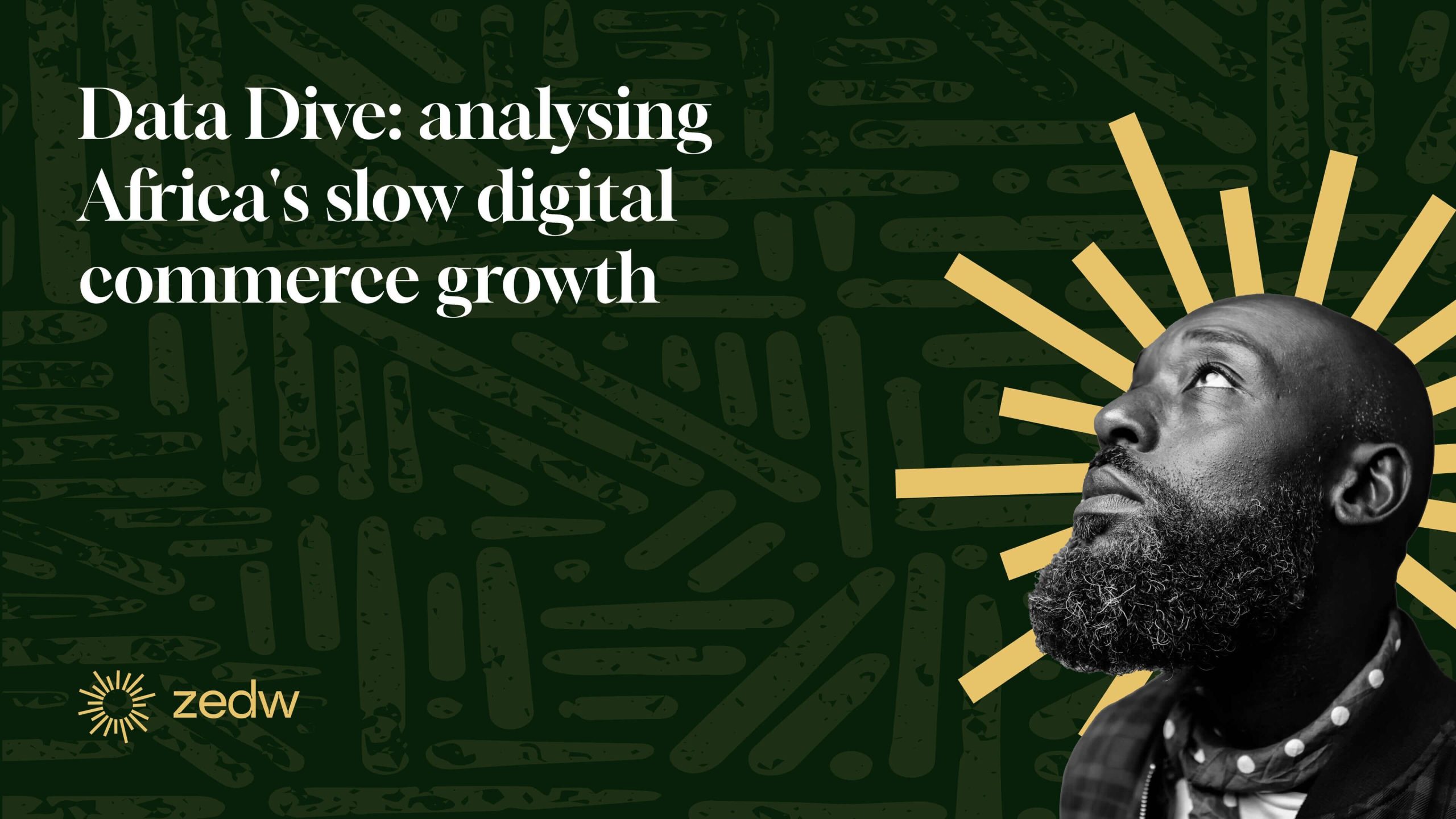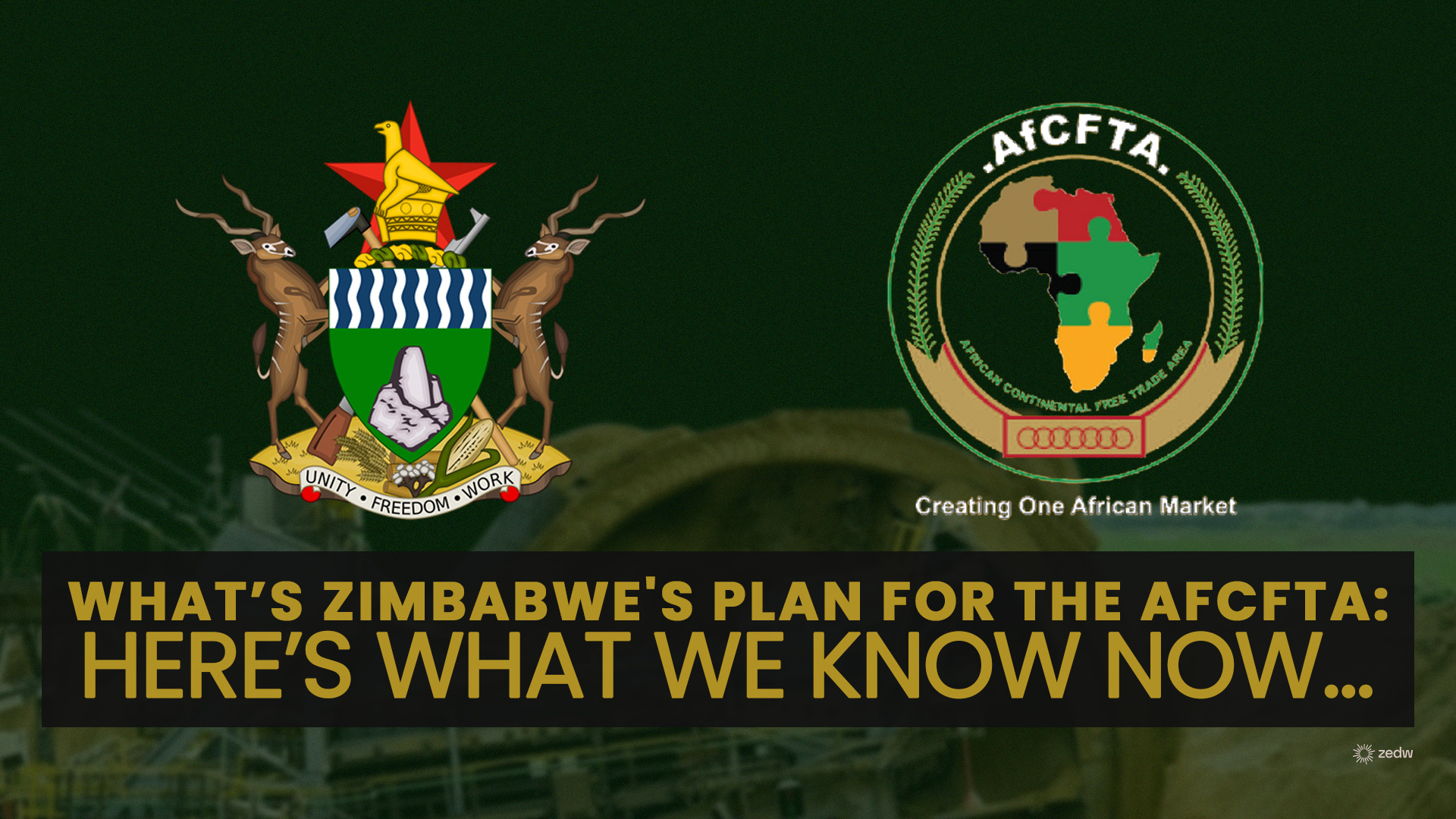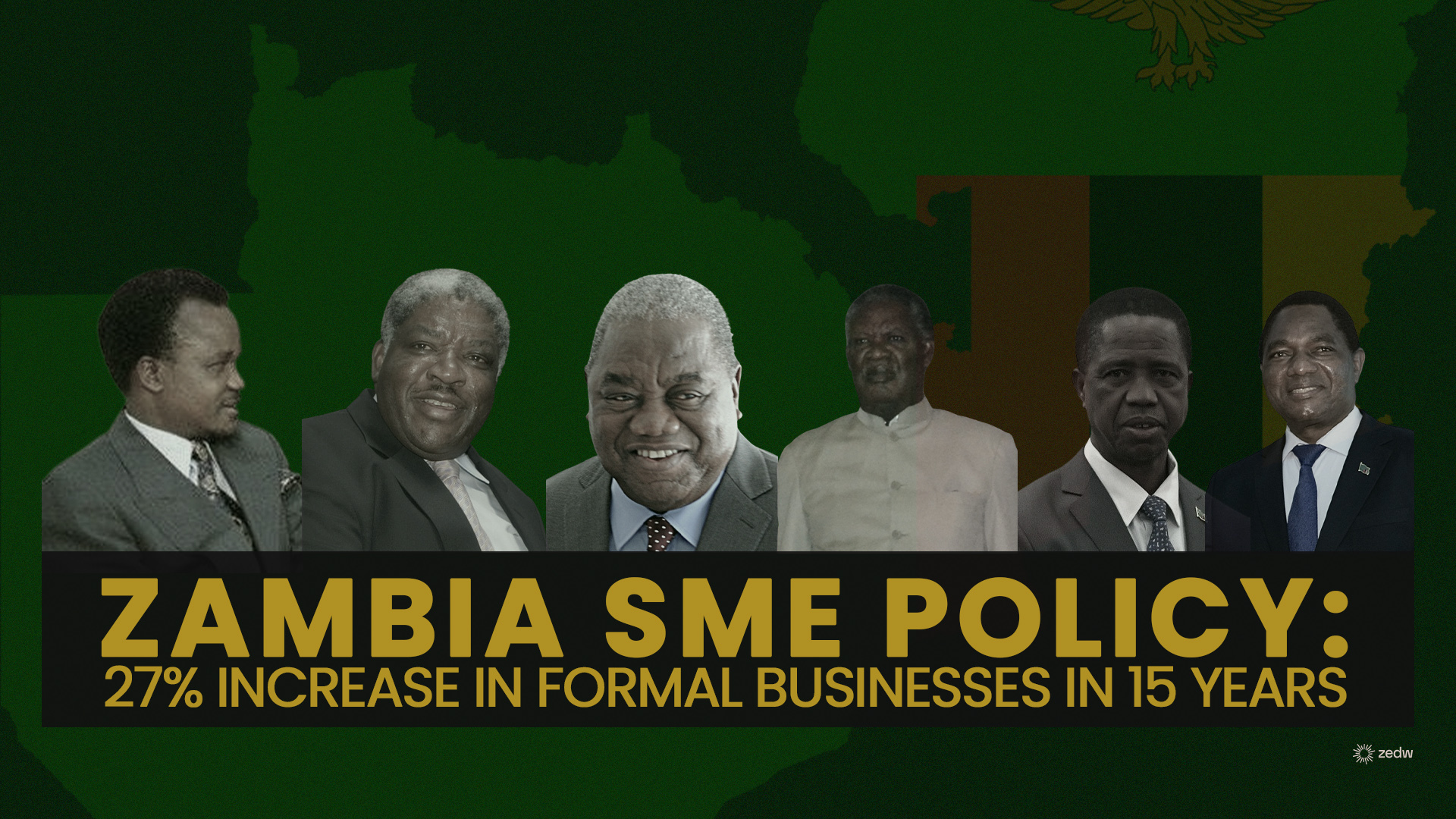The Reserve Bank of Zimbabwe (RBZ) unveiled the 2024 monetary policy statement – and as expected introduced a draft of new currency measures in an attempt to tame the country’s runaway inflation.
The currency which will be called the ZiG (Zimbabwe Gold) will come into effect on the 8th of April. The Central Bank announced that current balances of ZWL will be converted into ZiG at an exchange rate of ZiG1:ZWL13.57, with Governor John Mushayavanhu noting that the value is derived from dividing ZWL rate with today’s gold price. Subsequently, the ZiG will start off at an exchange rate of 1:0.06 with the US dollar which will continue to be used as an alternative currency alongside the ZiG until 2030 as previously announced.
Citizens have been urged to exchange their ZWL notes for the ZiG – which will come in 1, 2, 5, 10, 20, 50, 100 and 200 denominations- over the next 21 days. The conversion will take place at POSB and AFC Commercial Bank.
How is this any different from the local currencies before it?
The burning question for most people is how this iteration of a Zimbabwean currency will be different from attempts before it? The Central Bank is promising that they will only print notes backed by assets;
“The Reserve Bank shall only issue ZiG notes and coins against reserves assets actually held and managed by it, and the value of the ZiG issued and in circulation at any one time shall be anchored in and backed or covered by a composite basket of foreign currency reserves and precious metals received (mainly gold) and valuable minerals, held and maintained by the Reserve Bank in its vaults as part of the in-kind royalties.”
RBZ
The element of gold backing was mentioned often in the run-up to the currency being unveiled but from this statement, it doesn’t appear as though this is the return to the gold-standard that was tipped by many. Zimbabwe will be the only country backing its currency on mineral assets – an idea the rest of the world abandoned a while ago because of a lack of inflexibility tied to hedging currencies on gold.
Perhaps the most confusing part of the new currency is the fact that this gold backing will only be applicable “at times”:
“ZiG shall at all times be anchored and fully backed by a composite basket of reserves comprising foreign currency and precious metals (mainly gold), received by the Reserve Bank as part of in-kind royalties and kept in the vaults of the Bank.”
RBZ monetary policy
What’s not clearly stated in the document is which times it shall be anchored and when it won’t.
At the time of writing, the RBZ has US$100mn and 2,522kgs of gold (US$185mn) to back the entire local currency component of reserve money. The Central bank claims that these gold and cash reserves represent more than “3 times cover for the local currency being issued.”
What happens to existing ZiG?
What’s a bit confusing is that the central bank introduced gold-backed tokens called ZiG last year and they entered circulation in October and these share more than just a name with the “new currency”. At the time of their introduction, the RBZ had said the tokens could be used to transact – and would be part of the national switch – ZimSwitch.
Another similarity was that the lowest unit of the ZiG tokens also had an exchange rate of ZiG1:US$0.06 like the new currency. Additionally, like the “new” currency these ZiG tokens were bankable and then Governor of the central bank said, “Banks will maintain dedicated ZiG accounts and intermediate transactions in ZiG in the same way they intermediate transactions in local and foreign currency.”
Lastly, the token would carry the same IMTT tax that are all other transactions incur – which led to confusion as many asked if these features effectively made the ZiG token a currency but the Mangudya instead labeled it an “investment instrument with transactional capability.”
Today that token takes on a new name – Gold-backed digital token (GBDT). The bank accounts for this token will become the gold-backed-digital token account (GBDT). From the monetary policy unveiling event – the new Governor reiterated that the token, “is not a currency but an investment instrument” but there is still a confusion on whether the token maintains its transactional capabilities as before.
Anything else of note?
The new monetary policy outlines that low-cost accounts that have less than US$100 or the ZiG-equivalent will no longer incur monthly maintenance fees or service charges.
“Cognisant of calls by the banking public for affordable and reasonable bank charges, the Bank is with immediate effect directing all banking institutions to put exemption clauses on monthly maintenance or service charges for both FCA and ZiG deposit accounts that maintain a consecutive minimum daily balance of US$100 and below or its equivalent in ZiG for a period of up to 30 days.”
RBZ monetary policy
The 30-day deadline could mean this is a tactic to incentivise people to use digital payment methods and adopt ZiG usage more as cash has progressively become the dominant payment method in Zimbabwe – one of the reasons why the RBZ.
Another move meant to ensure ZiG usage will be in the realm of taxes. Government will make it mandatory for companies “to settle at least 50% of their tax obligations on Quarterly Payments Dates (QPDs) in ZiG”. Companies being required to settle a portion of their tax bill in local currency will probably stimulate demand.
“Within seven days from 5 April 2024, all entities other than banks and MNOs are expected to have completed the configuration of their systems to conduct business in ZiG.”
RBZ monetary policy
Mobile network operators have also been given an 8 April deadline to incorporate ZiG wallets and banks are already said to be on the new system. Beyond this, all businesses are expected to have completed the configuration of their systems to conduct business in ZiG by 12 April 2024.








